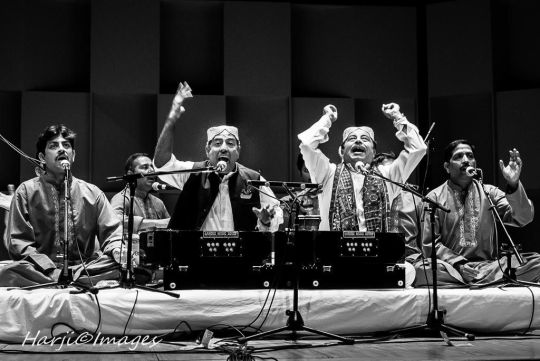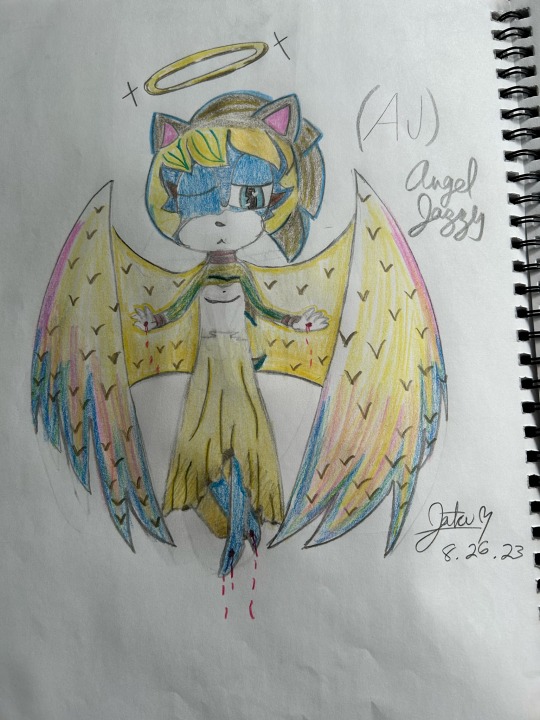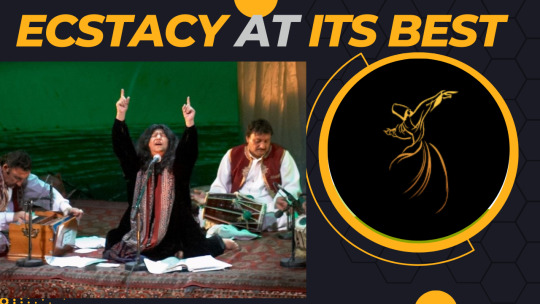#sufi world
Text

When Imam al-Hussain was fighting his tears were flowing and his sister asked, "Why are you crying?" I am sad for these people who are sending themselves to Jahannam (hell).
— Shaykh Dr. Muhammad al-Ninowy
#Ashura #Muharram #MartyrsofKarbala
#sufi#islam#sufiworld#shaykh#scholar#sufi world#scholars#habib#love#sufism#martyrs#imam Hussain#Karbala#imam Husain#martyrs of Karbala#ashura#muharram
13 notes
·
View notes
Text
“𝘐 𝘬𝘯𝘰𝘸 𝘺𝘰𝘶'𝘳𝘦 𝘵𝘪𝘳𝘦𝘥 𝘣𝘶𝘵 𝘤𝘰𝘮𝘦, 𝘵𝘩𝘪𝘴 𝘪𝘴 𝘵𝘩𝘦 𝘸𝘢𝘺.”
- 𝐉𝐚𝐥𝐚𝐥 𝐚𝐝-𝐃𝐢𝐧 𝐌𝐮𝐡𝐚𝐦𝐦𝐚𝐝 𝐚𝐫-𝐑𝐮𝐦𝐢
Follow me on instagram
📍Shah Jahan Mosque, Thatta Makli, Pakistan

#ramadankareem#ramadan mubarak#ramadan#ramzan#رمضان#رمضان مبارك#رمضان كريم#رمضان 2024#jummahmubarak#jummamubarak#jummah#jummablessings#جمعة مباركة#جمعه مباركه#جلال الدين الرومي#rumiquotes#rumic world#sufipoetry#sufi#jalaluddin rumi#mevlana celaleddin rumi#rumi#english writers#architecture#mosque#islamic architecture#art#masjid#pakistan#sindh
14 notes
·
View notes
Photo

Master Musicians Of Jajouka – Tribe Ahl Serif: Master Musicians Of Jajouka
Musicians have been making fucking loud music for a long long time,.
Get it from my Google Drive HERE
#master musicians of jajouka#the master musicians of jajouka#world music#experimental#sufi#sufi music
41 notes
·
View notes
Text

Har Lehza Ba Shakal Aan Blink, And There He Was In A Different Form.,
POET JALALUDDIN RUMI
Hamne beparda tujhe maah-jabeen dekh liya
Ab na kar parda ke o parda-nasheen dekh liya
Hamne dekha tujhe aankhon ki siyaah putli mein
Saat pardon mein tujhe parda-nasheen dekh liya
Ham nazar-baazon se tu chhup na saka jaan-e-jahaan
Tu jahaan jaake chhupa hamne vahin dekh liya
Tere deedaar ki thi hamko tamanna, so tujhe
Log dekhenge vahaan, hamne yahin dekh liya
Har lehza ba shakal aan but-e-ayyaar baraamad
Dil burd-o-nihaan shud
Har dam ba libaas-e-deegar aan yaar baraamad
Gah peer-o-javaan shud
Khud kooza-o, khud koozaagar-o, khud gil-e-kooza
Khud rind-e-subu kash
Khud bar sar-e-aan kooza khareedaar baraamad
Bishkast-o ravaan shud
Nai nai ke hamin bood ke mi aamad-o mi raft
Har qarn ke deedum
Ta aaqbat aan shakl-e-arab vaar baraamad
Daara-e-jahaan shud
Rumi sukhane kufr na guftast na goyad
Munkir nashvedash
Kaafir buvad aan kas ke ba inkaar baraamad
Mardood-e-jahaan shud
Notes by scholar Homayra Ziad:
1. Sly beloved or ayyār: An ayyār is a “pious rogue” and Love often appears in this form in Persian Sufi poetry.
2. Many manifestations of Reality: This imagery evokes the infinite manifestations of the Divine Unity. A Qur’anic verse that is often cited by Sufis is: “And God’s in the East and the West. Wherever you turn, there is God’s Face.” (Sura 2:115) All distinctions vanish in the Face of God. This is the central idea evoked by Sachal Sarmast too in the next song. In a similar poem, Kabir says…
In an elephant you became an elephant
An ant is just a little you!
As an elephant driver you sit on top
the one saying “move along” is you only you!
With thieves you become a thief
You’re in with the scoundrels too!
You’re the one who robs and runs!
The cop who nabs you, is you only you!
(A song from the oral traditions of Kabir in Malwa in central India, translation by Linda Hess)
3. The broken cup: The broken cup means that no category is absolute, and that divine manifestations are always in a state of flux. The only absolute is God’s essence.
4. “Until one day he emerged…”: A reference to the Prophet (the Perfect Human, insān-i kāmil).
5. Veiling the truth: According to the Persian scholar Mohammad Reza Shafi'i-Kadkani, the last two stanzas were originally:
Rumi sokhan-e kofr nagoftast (nagofteh ast) o nagooyad
Monker nashavidash
Kafir bovad an kas keh be enkar daramad
az doozakhian shod
Many thanks to Fereshteh Amanat-Kowssar at Yale University for pointing this out. I have translated the poem based on the original, which makes far more sense than the sung version. Kufr means hiding or covering up, and the word kāfir is used to describe one who “covers up” or denies the truth. Rumi’s words, though apparently blasphemous, are closer to the truth.
#qawwali#shayari#rumic world#rumi love quotes#rumi#urdu poetry#khalil gibran#sufi#sufi quotes#sufism#spirituality#urdu shayar#urdu ghazal#urdu literature#urdu poems#urdulovers#urdu stuff
27 notes
·
View notes
Note
Jazz, I want you to wear this angel outfit 🤭


New ego, but here you go! ^^
17 notes
·
View notes
Text
“Even if you are photographed in 20,000 poses, you are still one. Great wisdom lies in this. To reach your one essence, you must die to yourself while you are still alive. ‘Die before you die’, means to be in connection with the original.”
- Shaykh Nazim
#wake up world#don’t lose yourself#the real world#social media is toxic#who are you really?#reality quotes#know thyself#sheikh nazim#sufism#sufi quotes#spirituality quotes#you are you#self love#reminder#shaykh nazim al haqqani#life advice#life quotes#life reminders#spiritual quotes#deep quotes#words of advice#wisdom quotes#reality check#wake up call#meaning of life#humanity quotes#toxic society#awakening quotes#conscious awareness#soul quotes
32 notes
·
View notes
Note
Single-Mother! Neko-Sufi AU

Fellow! Rama: Not interested in, huh? Then why didn't you tell me now? Why are you crying now?


Single mother! Neko-Sufi: I-I yell at the man who give me all his gifts...
#Single-Mother! Neko-Sufi AU#basically basics#education and learning#ask#neko sufi#rama raid#alternate universe#single mother! Neko-Sufi#Fellow! Rama Raid#gacha world
4 notes
·
View notes
Note
Finish the lyrics with me! ^^
Can't help falling in love with you- Elvis Presley
Wise men say~🎶
"Only fool rush"~🎵
But I can't help falling in love with you~🎶
Shall I stay~🎵
Would it be a sin~🎶
If I can't help falling in love with you~🎵
Like a river flows
Surely to the sea
Darling, so it goes
Some things are meant to be
3 notes
·
View notes
Text

#muslim#islam#muslimah#islam help#muslimah motivation#islamic saying#islamic quote#deen#islamic#islampost#lazy#world#afterlife#life quotes#life lessons#life#be better#believer#wisdom#sufi wisdom#sufi#sufism#imam baqir
2 notes
·
View notes
Text
Peace and its attainment in all directions is the goal of the world.
— Hazrat Inayat Khan
#quote#quotes#life quotes#wisdom#hazrat inayat khan#sufism#sufi message#sufi#peace#goal#world#all directions#attainment#purpose#function of the world#purpose of the world#meaning of life#nature of things
5 notes
·
View notes
Text
HORUS: THE HEART OF THE WORLD
“The heart is the center of the human microcosm, at once the center of the physical body, the vital energies, the emotions, and the soul, as well as the meeting place between the human and the celestial realms where the spirit resides. How remarkable is this reality of the heart, that mysterious center which from the point of view of our earthly existence seems so small, and yet as the Prophet has said it is the Throne (al-‘arsh) of God the All-Merciful (ar-Rahmân), the Throne that encompasses the whole universe. Or as he uttered in another saying, “My Heaven containeth Me not, nor My Earth, but the heart of My faithful servant doth contain Me.” It is the heart, the realm of interiority, to which Christ referred when he said, “The kingdom of God is within you” (Lk 17:21), and it is the heart which the founders of all religions and the sacred scriptures advise man to keep pure as a condition for his salvation and deliverance. We need only recall the words of the Gospel, “Blessed are the pure in heart, for they shall see God” (Mt 5:8)
[…]
In Christianity the Desert Fathers articulated the spiritual, mystical, and symbolic meanings of the reality of the heart, and these teachings led to a long tradition in the Eastern Orthodox Church known as Hesychasm, culminating with St Gregory Palamas, which is focused on the “prayer of the heart” and which includes the exposition of the significance of the heart and the elaboration of the mysticism and theology of the heart. In Catholicism another development took place, in which the heart of the faithful became in a sense replaced by the heart of Christ, and a new spirituality developed on the basis of devotion to the Sacred Heart of Jesus. Reference to His bleeding heart became common in the writings of such figures as St Bernard of Clairvaux and St Catherine of Sienna. The Christian doctrines of the heart, based as they are on the Bible, present certain universal themes to be seen also in Judaism, the most important of which is the association of the heart with the inner soul of man and the center of the human state.
In Jewish mysticism the spirituality of the heart was further developed, and some Jewish mystics emphasized the idea of the “broken or contrite heart” (levnichbar) and wrote that to reach the Divine Majesty one had to “tear one’s heart” and that the “broken heart” mentioned in the Psalms sufficed. To make clear the universality of the spiritual significance of the heart across religious boundaries, while also emphasizing the development of the “theology of the heart” and methods of “prayer of the heart” particular to each tradition, one may recall that the name of Horus, the Egyptian god, meant the “heart of the world”. In Sanskrit the term for heart, hridaya, means also the center of the world, since, by virtue of the analogy between the macrocosm and the microcosm, the center of man is also the center of the universe. Furthermore, in Sanskrit the term shraddha, meaning faith, also signifies knowledge of the heart, and the same is true in Arabic, where the word îmân means faith when used for man and knowledge when used for God, as in the Divine Name al-Mu’min. As for the Far Eastern tradition, in Chinese the term xin means both heart and mind or consciousness.
– Seyyed Hossein Nasr (Chapter 3: The Heart of the Faithful is the Throne of the All-Merciful)”― Paths to the Heart: Sufism and the Christian East
Artwork: The falcon embodied the warrior and solar gods, among the most important of which was Horus. This magnificent breastplate, made using the cloisonné technique of inlaid glass, was found in the tomb of the teenage king Tutankhamun, who died around 1325 B.C. Egyptian Museum, Cairo
https://www.nationalgeographic.co.uk/history-and-civilisation/2021/03/from-cats-to-cows-to-crocodiles-ancient-egyptians-worshipped-many-animal-gods

#paths to the heart#sufism#seyyed hossein nasr#sufi gnosis#horus#the heart of the world#mystical christianity#ancient egypt
3 notes
·
View notes
Text

Once Prophet Mūsā (ʿalayhi s-salām) had extremely severe stomach pain. He humbly asked Allāh for relief and Allāh Subḥānahu wa-taʿālā ordered him to consume so-and-so herb from a jungle.
Prophet Mūsā (ʿalayhi s-salām) consumed the herb and was immediately cured of the pain.
After some days, the same disease reoccurred so he consumed the same herb again. Contrary to his expectation, his pain became even more severe.
Mūsā (ʿalayhi s-salām) humbly asked the Almighty, "O Allāh Subḥānahu wa-taʿālā! What is the secret behind this? One medicine has two entirely different effects! When I consumed it the first time, it cured me but when I consumed it the second time, it intensified my pain!"
Allāh replied, "O Mūsā! You used the herb the first time with My command, but the second time you used it of your own accord. O Mūsā! Know that cure is in My name. Without My name everything in the world is a deadly poison, and My name is its cure."
— Tafsīr-e-Na'īmī
#Hazrat Musa#prophet#Alayhi assalam#sufi#islam#sufiworld#shaykh#scholar#sufi world#scholars#habib#love#sufism#imam
17 notes
·
View notes
Video
youtube
« Ayy Yorum Biyo » by the legendary Tajik singer Muboraksho.
In 2009 the Iranian group Kiosk covered this song in the Iranian dialect ( « Yarom Bia » ) with the help of the Sufi artist Mohsen Namjoo. The group preserved the Tajik origins of the song and paid tribute to Muboraksho by keeping the lyric « از بدخشانمه ... ( ...from Badakhshan ) » and featuring clips from Soviet director Sergei Parajanov’s 1969 film « The Colour of Pomegranates (Цвет граната) » in the music video.
#iran#tajikistan#tajik#farsi#persian#soviet#soviet film#sergei parajanov#iranian music#tajik music#world music#mohsen namjoo#kiosk#badakhshan#khorassan#armenian film#music video#sufi#sufi music#persian language
6 notes
·
View notes
Text

#one world one smile#abida parveen#abida parveen sufi songs#abida parveen songs#abida parveen qawwali#abida parveen music#ghazals of abida parveen#abida parveen new songs#abida parveen sufi kalam#abida parveen status#abida parveen dhamaal#abida parveen ghazal#kuchh is ada se aaj#abida parveen kalam#sufi of abida#kuch is ada se aaj by#best of abida sufi#best of abida#abida parven#tu ne deewana banaya#sufi music#ghazal#ghazal songs#sindhi
0 notes
Text
The whole universe is full... / Yunus Emre
The whole universe is full of God
yet His truth is seen by no one
you have to look for Him in yourself
you and he are not separate you are one
The other world is what can't be seen
here on earth we must live as well as we can
exile is grieving and anguish
no one comes back who has once gone
Come let us be friends this one time
let life be our friend
let us be lovers of each other
the earth will be left to no one
You know what Yunus is saying
its meaning is in the ear of your heart
we should all live truly here
for we will not live here forever
(13th century, translated from the Turkish by W.S. Merwin & Talat Sait Halman)
#poetry#Yunus Emre#Turkish poetry#Sufi poetry#W.S. Merwin#Talat Sait Halman#Sufism#God#poems of praise#loving the world anyway#love#exile#the beautiful earth#friendship#mysticism#Anatolian poetry
1 note
·
View note
Note
Neko-Sufi: Hello there, Jazz ^^
Hi! ^^
2 notes
·
View notes